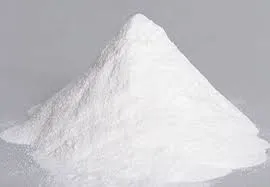
តុលា . 07, 2024 11:23 Back to list
redispersible polymer powder types
Understanding Redispersible Polymer Powder Types An Essential Component for Modern Construction Materials
In the realm of modern construction and building materials, redispersible polymer powders (RDPs) have gained significant acclaim for their versatility and performance-enhancing properties. These polymer powders, when blended with a variety of other materials, can substantially improve the workability, adhesion, and durability of construction products such as mortars, adhesives, and plasters. This article will delve into the different types of redispersible polymer powders, their applications, and the benefits they bring to the construction industry.
What are Redispersible Polymer Powders?
Redispersible polymer powders are water-soluble powders derived from emulsions. When mixed with water, these powders re-dissolve and create a flexible polymer film that enhances various properties of construction materials. Typically, RDPs are composed of vinyl acetate, ethylene, styrene, and acrylate copolymers. Their ability to reassimilate into a latex form after drying is what makes them particularly useful in applications where flexibility and adhesion are crucial.
Types of Redispersible Polymer Powders
There are various types of redispersible polymer powders available, each tailored for specific applications and performance requirements
1. Vinyl Acetate-Ethylene (VAE) Copolymers These are some of the most commonly used RDPs. They provide excellent adhesion and water resistance, making them ideal for exterior applications such as facades and tiling adhesives. VAE copolymers are also appreciated for their cost-effectiveness and environmental stability.
2. Acrylic Polymers These polymers are known for their superior flexibility, weather resistance, and UV stability. Acrylic-based RDPs are particularly suited for applications requiring high-performance coatings and adhesives, such as in waterproofing systems and thin-film applications. Their excellent adhesion properties make them a go-to choice for demanding environments.
3. Styrene-Acrylic Copolymers Combining the advantages of both styrene and acrylic, these RDPs offer robust mechanical properties and good thermal stability. They are often used in flooring adhesives and thermal insulation boards due to their high bond strength and durability.
4. Polyvinyl Acetate (PVAc) Though less common than the previously mentioned types, PVAc RDPs are still important in specific applications. They provide good balance between flexibility and adhesion and are frequently utilized in interior applications, such as wall finishes and quick-setting mortars.
Applications of Redispersible Polymer Powders
Redispersible polymer powders find extensive applications across various segments of the construction industry, including
redispersible polymer powder types

- Cementitious Adhesives and Mortars RDPs improve Open Time and workability, enabling easier application and better adhesion to substrates. - Tile Adhesives The use of RDPs enhances the flexibility and adhesion strength of tile adhesives, making them suitable for a variety of surfaces, including those subject to movement.
- Plaster and Stucco When added to plaster formulations, RDPs help create a more cohesive and flexible layer, reducing cracking and improving application properties
.- Self-Leveling Compounds In floor installations, RDPs can aid in achieving better flow and leveling characteristics while enhancing adhesion to various substrates.
Benefits of Redispersible Polymer Powders
Incorporating redispersible polymer powders in construction products can lead to several benefits
- Improved Performance RDPs enhance adhesive properties, making construction materials bond more effectively with surfaces.
- Water Resistance They provide water-repellent characteristics, which is essential for outdoor applications and moisture-prone areas.
- Enhanced Flexibility The flexibility imparted by RDPs allows products to endure thermal expansion and contraction without cracking.
- Extended Open Time RDPs allow for longer working times, giving applicators ample opportunity to adjust materials before setting.
- Sustainability Many modern RDPs are formulated to be low in VOCs, contributing to safer, environmentally friendly construction practices.
Conclusion
Redispersible polymer powders play a crucial role in the advancement of modern construction materials, enhancing their performance, durability, and application versatility. Understanding the different types of RDPs and their respective applications allows manufacturers and builders to select the most suitable options for specific requirements, ultimately leading to superior construction outcomes. As the industry continues to innovate, RDPs will undoubtedly remain a key ingredient in the development of high-performance building materials.
-
Versatile Hpmc Uses in Different Industries
NewsJun.19,2025
-
Redispersible Powder's Role in Enhancing Durability of Construction Products
NewsJun.19,2025
-
Hydroxyethyl Cellulose Applications Driving Green Industrial Processes
NewsJun.19,2025
-
Exploring Different Redispersible Polymer Powder
NewsJun.19,2025
-
Choosing the Right Mortar Bonding Agent
NewsJun.19,2025
-
Applications and Significance of China Hpmc in Modern Industries
NewsJun.19,2025







